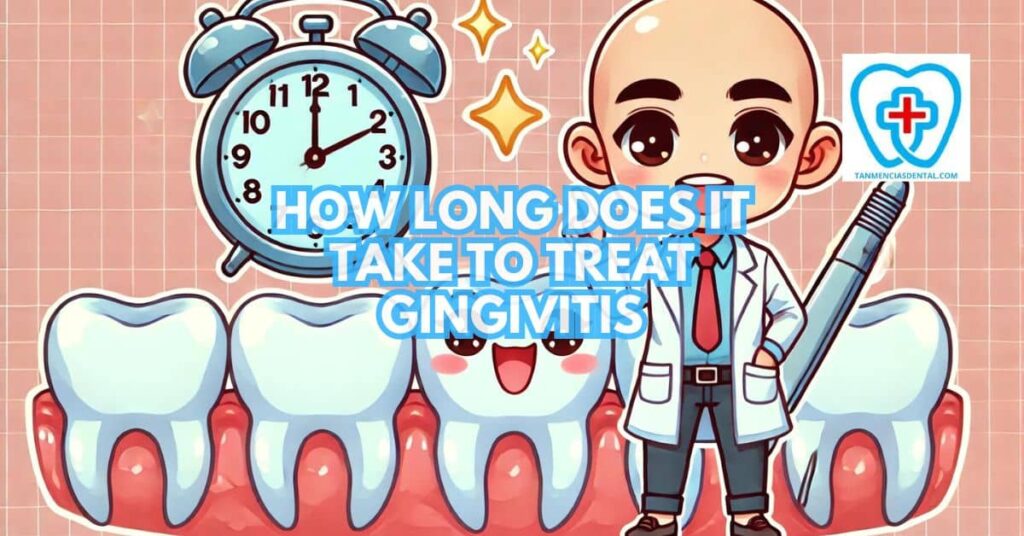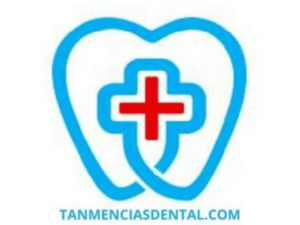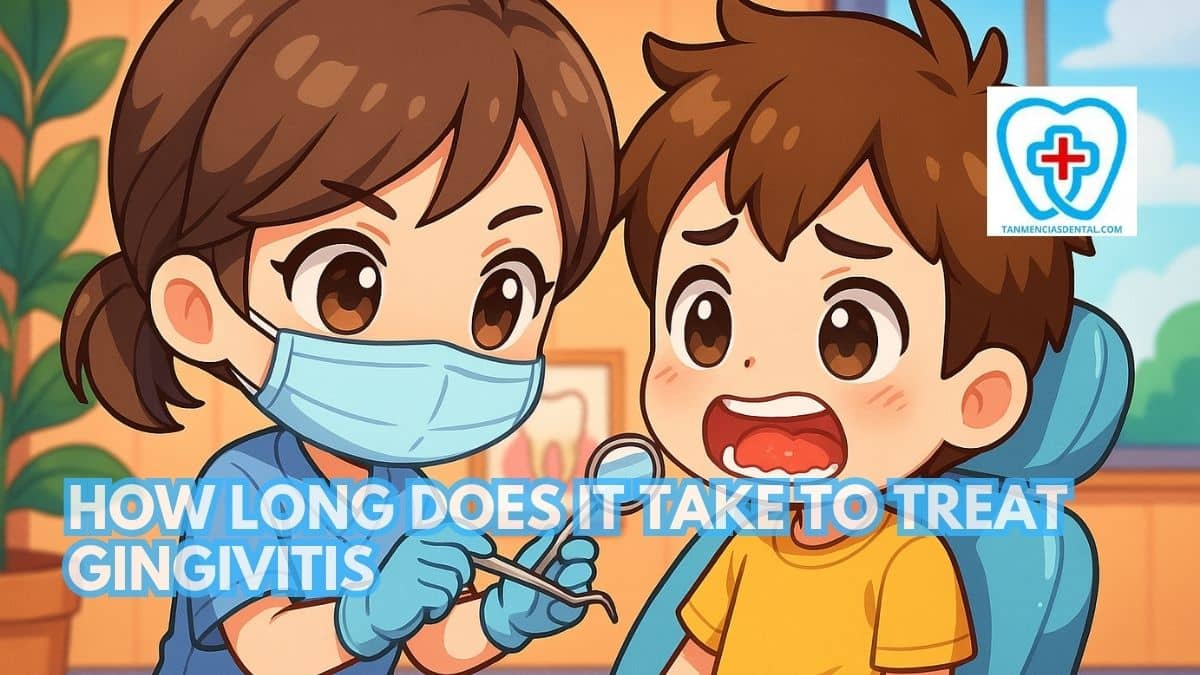Gingivitis is the earliest stage of gum disease and happens when plaque builds up along the gum line.
If not treated in time, it can lead to more serious problems such as periodontitis and even tooth loss.
Many people ask, How long does it take to treat gingivitis, and the answer depends on several factors, like the severity of the condition and how consistent you are with treatment.
We’ll explain the common steps used to treat gingivitis, from daily care at home to professional dental visits.
By understanding the treatment process, you can take better care of your gums and shorten the time it takes to heal.
1. Gingivitis 101: Understanding the Early Stage of Gum Disease
Gingivitis is the earliest and mildest stage of gum problems, and it happens when the soft tissues around the teeth start to inflame and become red or swollen.
The main cause is plaque, a sticky layer of bacteria that collects on the teeth when brushing and flossing are not done properly.
Over time, this plaque irritates the gums and makes them more sensitive, especially along the gumline.
If gingivitis is not treated, it can slowly progress into periodontal disease, which is a more serious condition that affects both the gums and the bone supporting the teeth.
Early recognition of gingivitis is important because treatment at this stage is often simple and effective.
People can protect their gum health by brushing at least twice a day, flossing daily, and visiting the dentist for routine cleanings.
Taking these steps can stop gum tissues from becoming damaged and prevent the condition from advancing.
🦷 Can You Recycle Electric Toothbrushes?
2. Warning Signs: Recognizing the Symptoms of Gingivitis
The first signs of gingivitis often include red, swollen gums that may bleed during brushing or flossing.
Bad breath and tender gums are also common indicators.
Some people may notice their gums receding or their teeth appearing longer.
Early detection of these symptoms is key to prompt treatment.
If you observe any of these signs, it’s important to adjust your oral care routine and consult with a dentist for further evaluation.
🦷 How to Choose the Best Antibacterial Toothpaste for Gingivitis That Really Works
3. Why Early Treatment Matters: Stopping Gingivitis in Its Tracks
Treating gingivitis early is vital to preventing it from advancing to periodontitis, a more severe form of gum disease.
Early intervention can restore gum health within a few weeks.
It involves removing plaque buildup and adopting better oral hygiene practices.
Ignoring early signs of gingivitis can result in more complex and costly treatments.
By addressing gingivitis promptly, you can maintain healthy gums and avoid long-term dental issues.
🦷 Why Dentistry Is Important: How It Saves Lives Beyond Just Smiles
4. Professional Help: The Power of Dental Cleaning
A professional dental cleaning is essential in treating gingivitis, especially if plaque and tartar have built up significantly.
During a dental cleaning, the dentist or hygienist removes plaque and tartar from the surfaces of your teeth and gum line.
This process, called scaling, is often accompanied by root planing, which smooths the roots of the teeth to prevent bacteria from accumulating again.
Regular dental cleanings can significantly reduce treatment time for gingivitis by addressing areas that are hard to reach with regular brushing and flossing.
Scheduling professional cleanings at least twice a year is recommended for maintaining optimal oral health.
🦷 Is It OK To Eat After Brushing Your Teeth?

5. Brushing Up on Brushing: At-Home Care for Healthy Gums
Proper brushing and flossing techniques are crucial for treating and preventing gingivitis.
Use a soft-bristle toothbrush to avoid damaging your gums and fluoride toothpaste to strengthen your teeth.
Brush at least twice a day, ensuring you cover all surfaces of your teeth and gum line.
Daily flossing removes plaque and food particles from between your teeth and under the gum line, areas that brushing alone can’t reach.
Incorporating an antibacterial mouthwash into your routine can further reduce bacteria and prevent plaque buildup.
🦷 Can Pediatric Orthodontists Prevent Complex Dental Problems? Early Interventions Explained
6. The Role of Diet and Nutrition in Healing Gingivitis
What you eat can affect how quickly your gums heal from gingivitis.
Foods rich in vitamin C, such as oranges and strawberries, help reduce gum bleeding and swelling.
Vitamin D, found in eggs and sunlight exposure, supports your body in fighting bacteria in the mouth.
Eating leafy greens and fish rich in omega-3 fatty acids can help lower inflammation and improve gum health.
A balanced diet provides your gums with the necessary nutrients to recover and remain strong.
🦷 Why are My Gums Peeling After Brushing My Teeth?
7. Timeline to Recovery: How Long Does It Take to Treat Gingivitis?
The time it takes to treat gingivitis varies depending on the severity of the condition and the effectiveness of the treatment plan.
Mild cases of gingivitis can typically be resolved within two weeks with diligent home care and professional cleanings.
More severe cases may take longer, requiring additional dental visits and more intensive treatments.
Consistent oral hygiene practices, including brushing, flossing, and using mouthwash, are essential for speeding up recovery.
Regular dental checkups are necessary to monitor progress and adjust the treatment plan as needed.
🦷 How a Children’s Dentist Makes Dental Visits Fun and Stress-Free
8. Beyond Mild Gingivitis: Treatment for More Advanced Cases
When gingivitis progresses to a more advanced stage, known as periodontitis, more intensive treatments are required.
Deep cleaning procedures, such as scaling and root planing, are often necessary to remove plaque and tartar from below the gum line.
In some cases, medications may be prescribed to control infection and reduce inflammation.
Severe periodontitis may require surgical interventions to restore gum health and prevent tooth loss.
The treatment duration for advanced cases depends on the severity and the patient’s response to initial therapies.
🦷 Fresh Breath, No Paste? How to Brush Your Teeth Without Toothpaste and Keep Smiling
9. Keeping Your Smile Healthy: Preventing Gingivitis Relapse
Preventing a relapse of gingivitis requires maintaining a consistent and effective oral hygiene routine.
Brush your teeth at least twice a day with fluoride toothpaste, and use a soft-bristle toothbrush to avoid irritating your gums.
Daily flossing is crucial to remove plaque and food particles from between your teeth and along the gum line.
Regular use of an antibacterial mouthwash can help reduce bacterial growth and prevent plaque buildup.
Additionally, adopting a healthy diet and avoiding tobacco products can significantly contribute to long-term gum health.
🦷 Beyond the Bristles: Creative Ways on How to Clean Teeth Without Brushing
10. Regular Checkups: Your Partner in Oral Health
Regular dental checkups are essential for preventing and managing gingivitis.
During these visits, your dentist can identify early signs of gum disease and provide timely interventions.
Professional cleanings during these checkups remove plaque and tartar that regular brushing and flossing might miss.
Your dentist can also offer personalized advice on improving your oral hygiene routine.
Scheduling dental checkups at least twice a year ensures that any potential issues are caught early, keeping your gums healthy.
🦷 Endodontic And Periodontal Treatment in Marikina
11. When to See a Dentist: Addressing Persistent Symptoms
If you notice persistent symptoms of gingivitis despite maintaining good oral hygiene, it’s important to see a dentist.
Symptoms such as bleeding gums, swelling, redness, and bad breath that do not improve with home care require professional evaluation.
Your dentist can determine the underlying cause and recommend appropriate treatments.
Ignoring persistent symptoms can lead to more severe gum disease and potential tooth loss.
Early intervention by a dental professional is crucial to prevent further complications.
👨⚕️ Conclusion
Achieving and maintaining healthy gums requires a combination of proper oral hygiene practices and regular professional care.
By understanding the steps and timeline involved in treating gingivitis, you can take proactive measures to ensure your gums remain healthy.
Following a consistent oral care routine, including brushing, flossing, and regular dental checkups, is essential.
With diligence and professional support, treating gingivitis is achievable, leading to a healthier smile and better overall oral health.
Prioritize your gum health to prevent future dental issues and enjoy a confident, bright smile.
😊 Self-Promotion
Visit Tan-Mencias Dental Clinic in Parang, Marikina City, for all your dental care needs.
Our friendly and professional team is dedicated to providing you with the highest quality of care.
You can reach out to us with any questions or concerns by calling 9171451074, sending a message through our Facebook page, or using our website’s contact form.
We are here to ensure your smile stays healthy and bright.
Book your appointment today and experience exceptional dental care with a personal touch!
❔ FAQs
1. Can gingivitis go away on its own without treatment?
No.
Gingivitis will not go away on its own.
It requires proper brushing, flossing, and often professional dental cleaning to fully heal.
2. What happens if I ignore gingivitis?
If gingivitis is not treated, it can develop into periodontitis, a more serious gum disease that may lead to tooth loss and long-term damage to the gums and bone.
3. How do I know if my gingivitis is getting better?
Healing gums usually stop bleeding, swelling goes down, and bad breath improves.
These are signs that treatment and good oral care are working.
4. Can children and teenagers get gingivitis, too?
Yes.
Gingivitis can affect people of all ages, including children and teens, especially if they do not brush or floss regularly.
5. How often should I visit the dentist if I have gingivitis?
You should see your dentist for a cleaning and checkup at least twice a year, but more frequent visits may be recommended if your gingivitis is moderate or severe.

